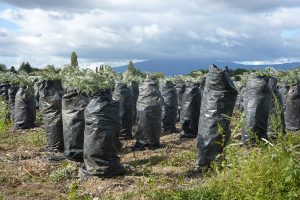Well, shopping this morning was a complete nightmare. This was because I got there too early.
It was not my usual shopping crowd—the single women, sometimes men, whizzing around with their self-scanning devices, with a purposeful glint in their eye, placing items surely and steadily in the jaws of their organized shopping bags in preparation for an instant departure to other, better, places.
No these were seriously old people. Not normally old like us, but ancient.
It seems that most of them had forgotten they had ever been to a supermarket before. They also forgot their shopping trollies and much merriment was had by placing items in strangers’ baskets. They worked the store in couples and often lost each other in the aisles. Most of them had forgotten how the fruit and vegetable weighing machine worked and then stuck the ticket onto the wrong item. I saw one old gentleman take off his hat in the yoghurt section and leave it there.
As they were the vintage, traditional crowd, many of them were buying their Christmas cardoons—not the prepared-for-wimps sort in the glass jars, but the real sort full of strange dye and nasty prickles. All these old folks are now doing culinary battle with this most obstreperous of vegetables. Only the quince, I feel, is a plant that has a greater reluctance be eaten.
The cardoon is brother to the artichoke and it originates from the south of France. Its first seeds came north to Geneva in 1685 with the Protestants fleeing persecution at home.
 Our Thorny Silver Cardoon of Plainpalais is difficult to handle. The idea of using a soft brush to remove the thorns and white outer skin is outrageous. You need gardening gloves, a good Japanese housewife’s kitchen knife and lots of verve. If you touch the stem with your bare hands, your skin turns black.
Our Thorny Silver Cardoon of Plainpalais is difficult to handle. The idea of using a soft brush to remove the thorns and white outer skin is outrageous. You need gardening gloves, a good Japanese housewife’s kitchen knife and lots of verve. If you touch the stem with your bare hands, your skin turns black.
Here is the nec plus ultra recipe for Cardoons in Cream[1] by Mme Joseph Dumonthay of Geneva.
Tip! First find your gardening gloves.
- Prepare your spiny cardoon by removing thorns and outer skin.
- Cut into pieces that you immediately soak in 2l of cold water mixed with 2tbls of flour.
- To cook, prepare the same as above, adding salt and 1dcl of milk.
- Add cardoon pieces when the water boils and boil for 30-40 min. Drain.
- In shallow oven-proof dish place your cooked cardoon pieces cut quite small. (Max 2 layers.)
- Sprinkle generously with grated parmesan or gruyere cheese. Pour over lots of fresh cream and top with pats of butter.
- Bake at the top of a very hot oven 10-20 min until golden. The cream must not boil.
- Serve hot.
So, this one’s for you, my shopping companions of this morning. Thank you all for being the living memory of old Geneva. Who cares where your hat is, when you’re looking at a cardoon gratin for supper?
[1] Revue du Vieux Genève, 1978. Pierre Blondin, Les fameux cardons genevois, pp 66-67.
Photo: Yvonne Borloz